Well I’ve finally gotten around to it. I know, I know, it’s long overdue. A new exhaust seems to be pretty much the first thing that everyone does these days, but autocross necessitated some other modifications first. Also, to be perfectly honest, I was a bit hesitant. I feel like the odd-one-out in the car scene, because unlike most folks, I don’t want a super loud exhaust on my car. If it was a weekend/track car, that would be one thing, but this is my daily driver, and I put almost 20,000 miles on it a year, so I still want it to be tolerable around town, and not annoying on long road trips. My criteria were as follows:
- No tinny, raspy, metallic “fartcan” sound (AKA Honda Civic w/ AutoZone muffler.)
- Quiet at idle (I don’t want my car vibrating people’s skulls when it’s just sitting around.)
- No drone at ANY speed.
- More low frequency sound, as the current exhaust lacks any sort of deep sound.
- Ideally relatively quiet when tooling around, and louder but not in-your-face when accelerating.
With those being my criteria, and also trying to keep with the theme of the car of being a bit “different,” I started looking at some possible systems. I more-or-less dismissed systems such as the Invidia N1/Q300, HKS Legamax, etc… simply because everyone and their mother runs them. I then discovered Dezod Motorsports, and found their exhaust to be quite interesting, but it seemed as though it might be a bit loud for my tastes (I’d heard that with headers – an eventual modification I want to do – it could become particularly loud.)
In any event, I was eventually made aware of Fujitsubo… a company I admittedly hadn’t even heard of. I had to do some research but the only feedback I found was things like, “they’re one of the best exhausts you can buy,” and raving about the build quality, sound quality, etc… Also, many Fujitsubo exhausts are JASMA approved (Japan Automotive Sports Muffler Association). That means they have to meet some noise regulations (94-98 dB or such – there were some discrepancies on various forums.) All things considered, this sounded like the best bet to meet all of my requirements, so I went ahead and purchased the Fujitsubo Authorize R catback system.
Before I go any further, let’s quantify the things that people will want quantified. These numbers are not from any tests I have done, but straight from Fujitsubo’s site, so keep that in mind (for example, I’m not sure where they got 98 dB from, since it doesn’t sound anywhere near that loud…)
Performance
HP: 174.1 @ 6580 RPM -> 177.6 @ 6520 RPM (+3.5)
TQ: 144.0 @ 6190 RPM -> 146.3 @ 6110 RPM (+2.3)
Weight: 41.0 LB -> 33.7 lb (-7.3)
Sound
Idle: 61 dB -> 65 dB
3000 RPM: 73 dB -> 81 dB
5000 RPM: 80 dB -> 84 dB
Max: 87 dB -> 98 dB
So, this isn’t going to uncork a TON of power on its own (though it will allow the car to breathe better with other power mods down the road). It also appears to perfectly meet my noise criteria as well: not much louder at idle, but still willing to make some noise when you get on it!
Arrival
The exhaust arrived well-packaged in a rather large, and fairly sturdy box plastered with “FRAGILE!” stickers for good measure. The mid-pipe, y-pipe, and axle-back were wrapped in plastic, and everything was cushioned in expanding foam blocks. The hardware came shrink-wrapped on cardboard (nicely organized, though a bit of a pain-in-the-butt to unwrap.)
First impressions were excellent. Full Disclaimer: I’ve never purchased an aftermarket exhaust before, so I don’t have much basis for comparison. Having said that, my god is this exhaust pretty! The axle-back would be equally at home on a pedestal in my living room as it would be under my bumper. That isn’t chrome, by the way, but polished stainless steel. The mirror finish was flawless. I’m no expert on welds either, but they look absolutely lovely. I don’t know all of the technical terms for describing a “good” weld, but they’re, uh, smooth… and uh… full of pretty rainbow colors? I guess look at the photos and decide for yourself. Anyway, the point is this thing oozes quality, feels solid, and looks like it was made by someone who enjoys what they do.
Of course, this only makes me feel bad because it’s going to get coated in salt in the winter months. So we will consider this an aggressive test of the longevity of polished stainless steel in a Chicago climate.
Installation
This is one of the easiest modifications you can do to your car. Taking the old exhaust off involves jacking the car up, removing a whopping TWO screws, and sliding the exhaust off of 5 rubber hangers. In fact, the hardest part is that last step. Even with generous amounts of PB Blaster, it can still be a real pain to remove the hangers because it’s difficult to get the leverage. In any event, with the two spring bolts removed, and the 5 hangers removed, the old exhaust was out. Installing the new exhaust was, well, pretty much the same thing in reverse, just with a few additional bolts. First I loosely connected the mid-pipe to the y-pipe (using a metal crush ring gasket). Then that gets installed on the car, reusing the old donut gasket where it meets the front pipe. With that loosly installed, the axle-back can be installed. Then you tighten everything front-to-rear, and wipe off all your fingerprints and hand grease. There isn’t much more to add, so here are some before-and-after photos of the process.
Results
Fitment: I like it! First off, I’m happy to report that after tightening everything down, the exhaust sits almost perfectly without any adjustment. If anything, the right exhaust might be slightly lower than the left, but horizontal fitment is spot-on, with both tips centered in the bumper cutouts. This pleases me. I love how the larger tips properly fill out the bumper cutouts. It doesn’t look awkward now. You can see in the above photos that the stock exhaust tips were pretty awkwardly recessed into the bumper – almost as if someone accidentally cut the pipes too short. In contrast, these come out further, which I like. Overall, I think it all looks great!
Sound: I’m happy with it! The biggest change is in the lower frequencies… in that there are some now. The stock exhaust doesn’t have any deep sound at all, which is a big part of what makes it sound so “Camry-ish” by default. Now I’ve got a low rumble (inching towards that ‘Boxer Rumble,’ but I’d need a UEL header to really achieve that kind of noise.) However, what I really love is that it’s a subdued rumble. When you start the car, it doesn’t sit there going, “Hey. I’m making noises. Hey. HEY. PAY ATTENTION TO ME!” It’s just a subtle rumble that’s audible, but nothing more than that. Revving the engine brings out a more aggressive exhaust note that is noticeably louder than stock, but still not nearly as loud as many other Toyobaru aftermarket exhausts. The addition of lower frequency sound means it can “sound louder” without being that much louder.
Here is a comparison to the stock exhaust. In this clip, the microphone is approximately 5 feet behind the car. Sorry for the surrounding noise – I live in a very urban area, and there aren’t really any secluded spots.
Below is a driving comparison. The first 50 seconds are of the stock exhaust, and the rest is the Fujitsubo. In both clips, the microphone is mounted externally, taped to the top, center of the rear bumper (so just poking out from under the trunk lid.) I love how the exhaust makes its presence known under throttle or deceleration, but fades away during steady-state cruising.
…and yes, a skeleton mount for my GoPro is on order. All I had was the waterproof case, which wouldn’t allow me to connect the microphone, so I had to hold the GoPro with one hand while steering, shifting, and indicating with the other. The things I do for you guys…
Interior noise while driving is also exactly what I wanted. I can actually hear the exhaust now, as opposed to only hearing the engine. I still have the sound tube unplugged, and in this configuration, I actually get a nice combination of both, especially approaching redline. It’s neat to be able to hear both ends of the car. When cruising at a steady speed at anything below 60 MPH, the exhaust note almost entirely disappears. This is not a criticism. If I’m just cruising along at a steady speed, I don’t want my car making a bunch of noise. This makes the cabin a really nice place to be. Off throttle, the noise comes back, as it does during acceleration, which is as it should be. Above 60, you start to hear the exhaust, but it’s just in the background and not at all obtrusive (listening to music is a non-issue.)
Oh, and there is no drone at any speed! Overall, I’m quite pleased with how this exhaust sounds so far. Of course, in the spring I’m hoping to add a header, and get a tune, so we shall see how much louder it gets then.
Below is an in-car recording. The microphone is just to the right of my head, attached to the seat. You can see what I mean when I say it’s still quiet on the inside! The first 1:30 is slower speeds, and the rest is higher speeds on the highway.



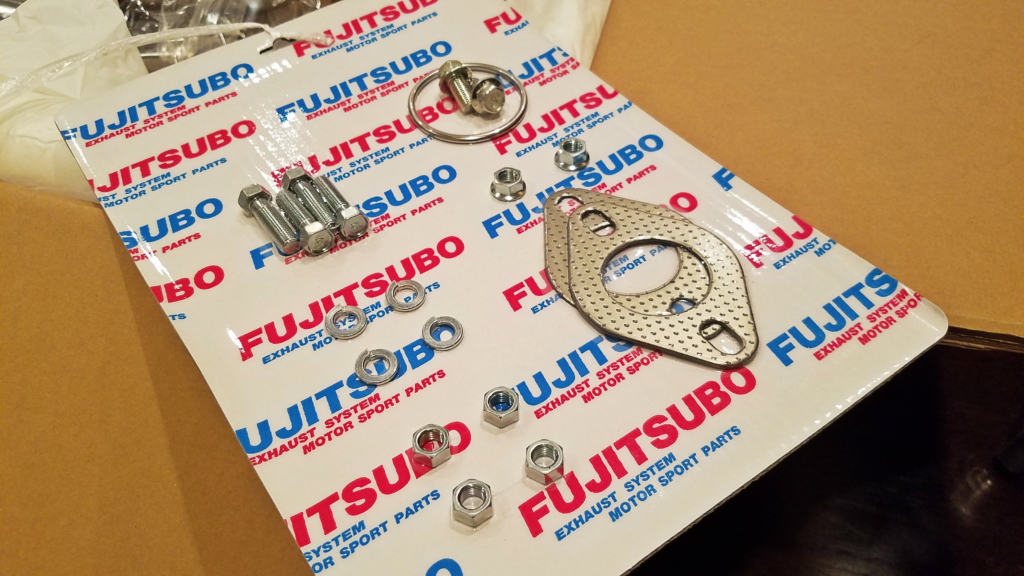
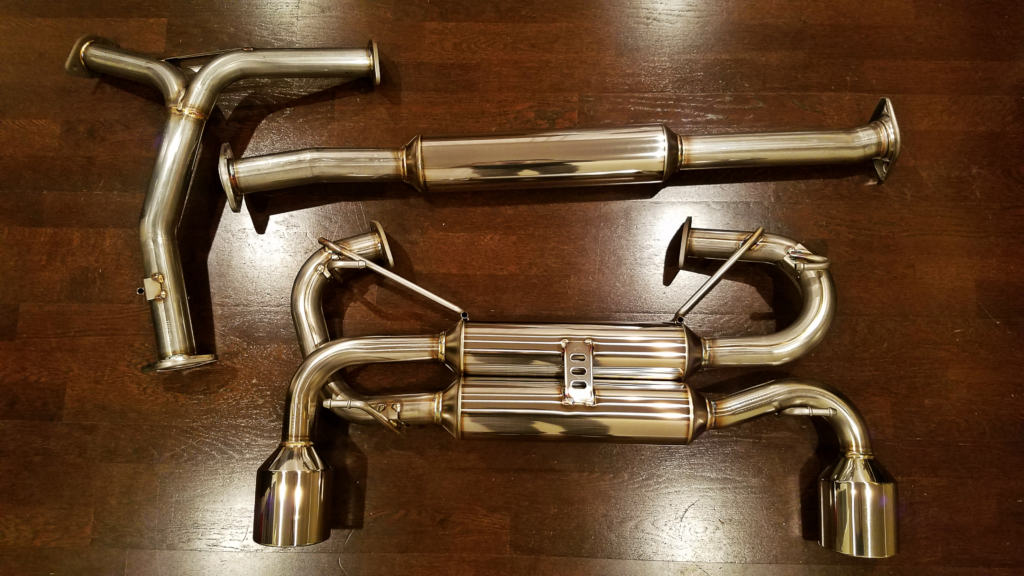
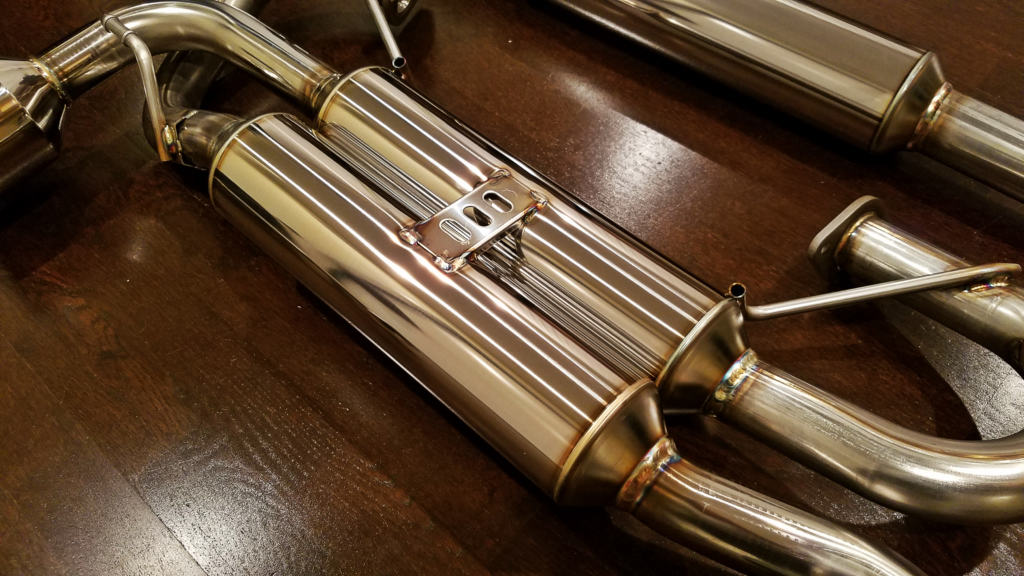
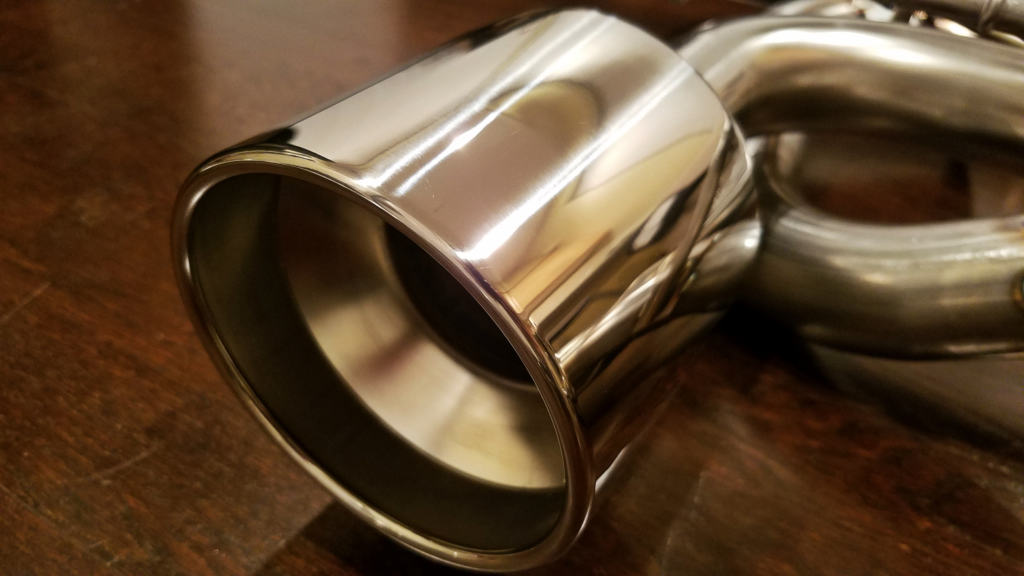
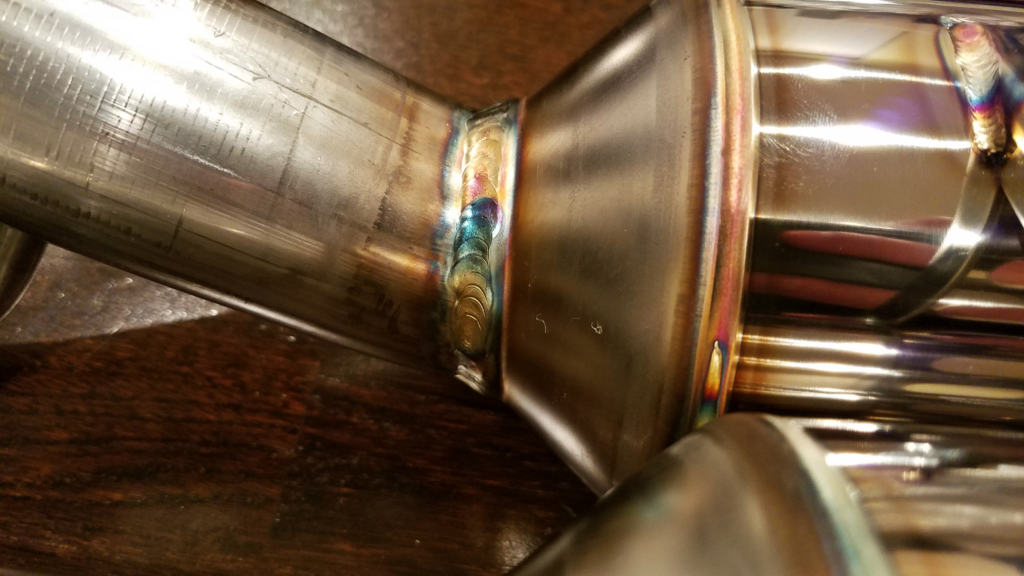
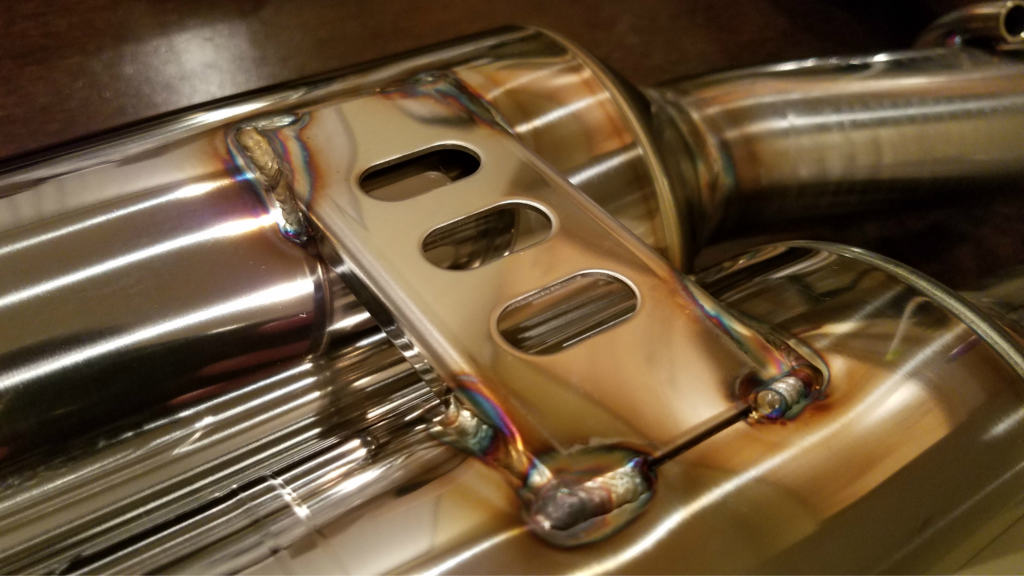







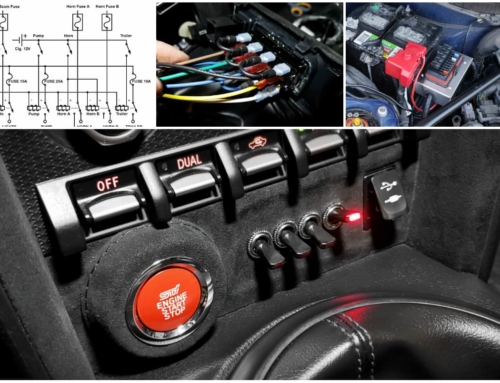
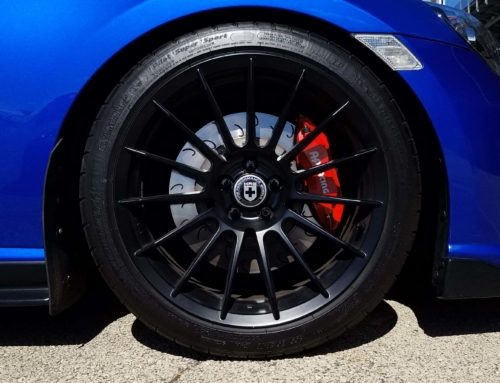
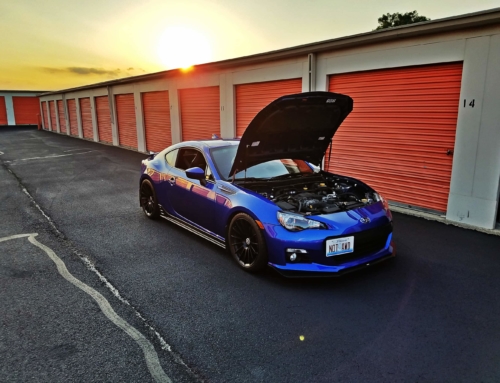




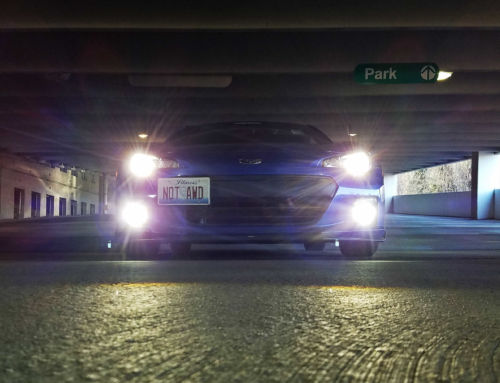
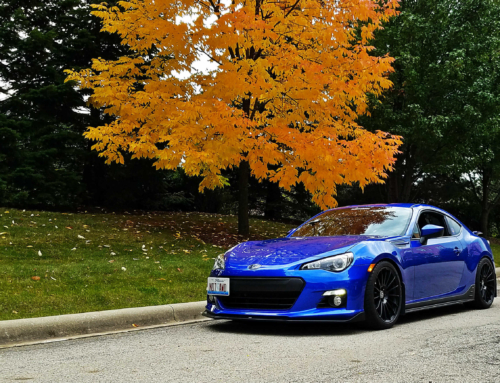
fun site! you made the choice that I wish I made on exhaust.
Thanks! It’s been a few months now and I’m still happy with it 🙂